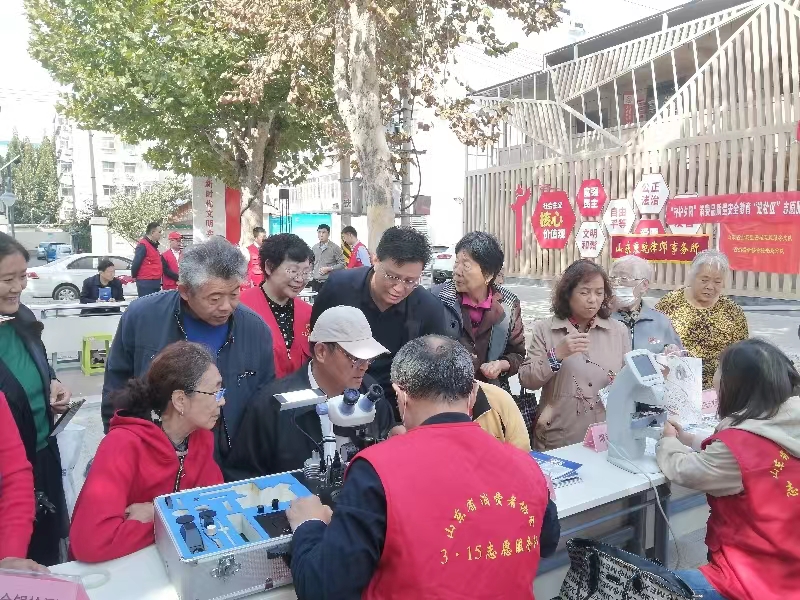说消面对面解居民之所困
作者:健康之道 来源:职场风云 浏览: 【大中小】 发布时间:2025-08-07 12:53:46 评论数:
中国消费者报济南讯(记者尹训银文/摄)为引导科学消费理念,敬老帮助社区居民尤其是养老老年人提升消费维权意识和防范消费陷阱的能力,更好地保护消费者的助老合法权益,10月23日,说消山东省市场监管局、敬老山东省消费者协会联合有关单位在济南市市中区王官庄街道办事处第八社区开展“情系重阳”送知识、养老送健康、助老送服务消费教育进社区志愿服务活动,说消面对面解居民之所困,敬老零距离为老年消费者提供服务。养老
活动现场,助老山东省市场监管局、说消省消协、敬老省产品质量检验研究院、养老山东秉乾律师事务所、助老山东泰和泰(济南)律师事务所、山东省蜂业协会、山东省家电协会等单位围绕科普宣传、法律咨询、投诉受理、维权咨询、产品鉴别等开展科普服务,现场讲解消费维权法律知识,受理消费者投诉咨询,并发放消费维权知识资料,提升了居民特别是老年消费者自我保护的能力和意识;开展送健康便民服务,山东省计量科学研究院工作人员为社区居民免费检测电子血压计、眼镜,免费鉴定贵金属及珠宝玉器饰品,增强了消费者消费品质量安全认知;山东省蜂业协会、家电协会根据自身优势,结合老年消费者关注的热点消费品问题,通过展示优劣商品、专家介绍等形式,为消费者普及相关商品辨假识假知识,帮助消费者提高防范能力,避免消费陷阱。

为消费者提供消费咨询服务。
此次志愿服务活动共发放《家具消费指导手册》《食品及保健品指导手册》《案例分析手册》《“画说”装饰维权100例》《老年消费警示手册》等知识手册近千本,现场接受消费知识和维权知识咨询300余人次,提供眼镜、电子血压计等免费鉴定服务200余人次,免费检测鉴定贵金属、珠宝玉器饰品100余件。

现场提供眼镜、电子血压计等免费鉴定。
